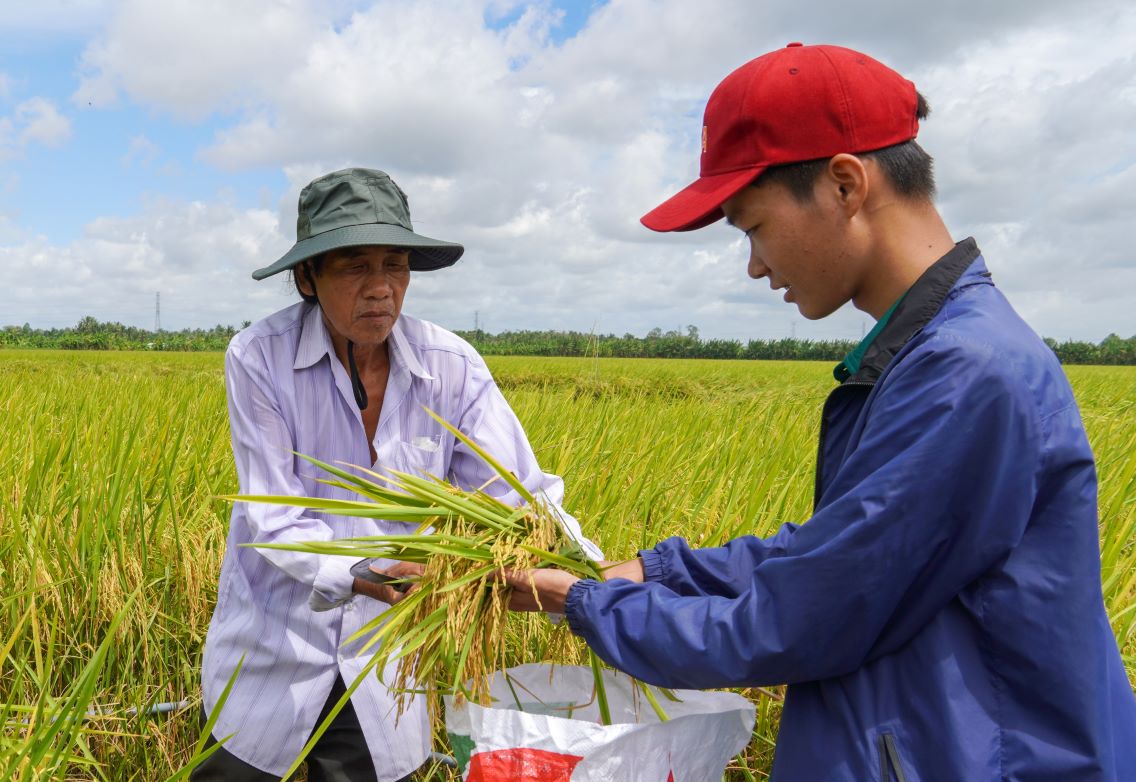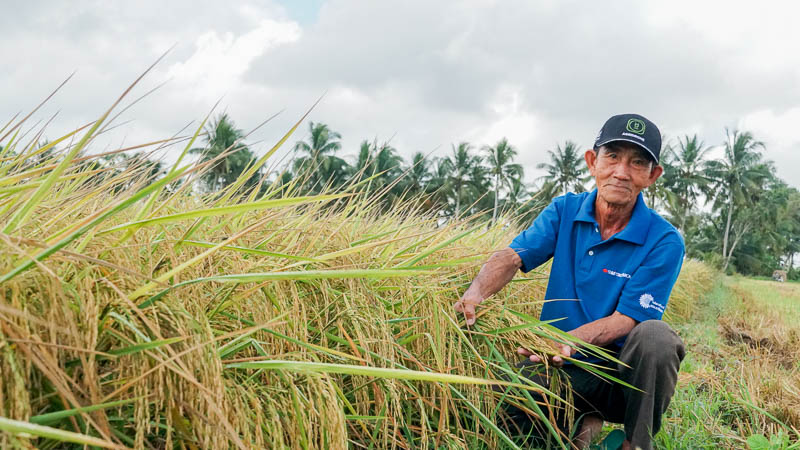Once a land contaminated with alum and salinity, producing only 1 rice crop per year, Soc Trang has today changed strongly. Annual rice output currently exceeds 2 million tons, an increase of 2.4 times compared to 1992. The production structure has also shifted towards goods, high quality, in which the ST25 rice variety that was once honored as the World's Best Rice twice became a typical bright spot.

Looking back on the development journey, Dr. Tran Tan Phuong, former Deputy Director of the Department of Agriculture and Environment of Soc Trang province, and one of the scientists who directly researched ST rice varieties, still cannot forget the difficult early days.
He said that Soc Trang used to have many types of fragrant rice but low productivity, only growing 1 crop/year. In that context, breeding fragrant, high-yielding rice varieties that can be grown 2-3 crops/year and resist pests and diseases is an urgent requirement.
In 2003, the research team began the breeding process. From simple combinations, ST11, ST12 were born. Later, each hybrid combination had dozens of parents to integrate the characteristics: fragrance, softness, resistance to diseases, and beautiful bean shape. As a result, the ST24 variety was released, then ST25.
In 2019 and 2023, ST25 rice was honored as the World's Best Rice. This success not only puts Vietnamese rice on the global agricultural map but also changes the lives of thousands of farmers.

Mr. Truong Van Hung - Director of Hung Loi Agricultural Cooperative (Long Duc commune, Long Phu district), said: "Since ST25 was honored, farmers in the cooperative have mainly chosen this variety because of its outstanding economic efficiency. Enterprises can supply at stable prices, people no longer worry about being forced to pay".
Also in Long Duc commune, Mr. Pham Hoang Tran excitedly shared that thanks to growing ST25 rice, his family has built a spacious house worth billions of dong. "Previously, growing rice varieties was often unstable in price and had difficult outputs. Now, with ST25, productivity and selling prices are both high, with profits increasing significantly. In the 2024-2025 Winter-Spring crop alone, with 3 hectares of ST25 rice, the profit is about 50 million VND/ha, 5 million VND/ha higher than that of regular rice varieties," said Mr. Tran.

In Dai Tam commune (My Xuyen district), ST rice variety has accompanied people for more than 20 years, from the early days with ST3 to ST25. Mr. Hua Thanh Nghia, Director of Nghia Thang Cooperative, affirmed: "Confirmed seed cultivation and close linkage with businesses have helped rice growers significantly increase their income, many households from the poor have risen to become well-off".
In 6 rural communes of My Xuyen district, ST rice also helps restore the traditional model of "shrimp hugging rice plants" in ineffective shrimp farming areas. Since then, the product " fragrant rice - clean shrimp" is now being accepted by the market, bringing sustainable economic value.
According to Mr. Vuong Quoc Nam - Vice Chairman of Soc Trang Provincial People's Committee, the locality currently has the 5th largest rice growing area in the Mekong Delta with over 140,000 hectares. Thanks to the structure of specialized production of 2-3 crops per year, the total annual sowing area reaches over 330,000 hectares, with an output of over 2.1 million tons. Of which, the ratio of specialty rice and high-quality rice accounts for over 54%, while ST24 and ST25 rice varieties account for over 18%.
In the orientation for agricultural development in the coming period, Soc Trang continues to prioritize the development of specialty rice. The provincial agricultural sector is stepping up the expansion of raw material areas, applying high technology, building a fragrant rice brand, aiming for sustainable production. The target for 2025 is to increase the area of special-use rice sowing to 195,000 hectares, with ST varieties continuing to play a key role.










